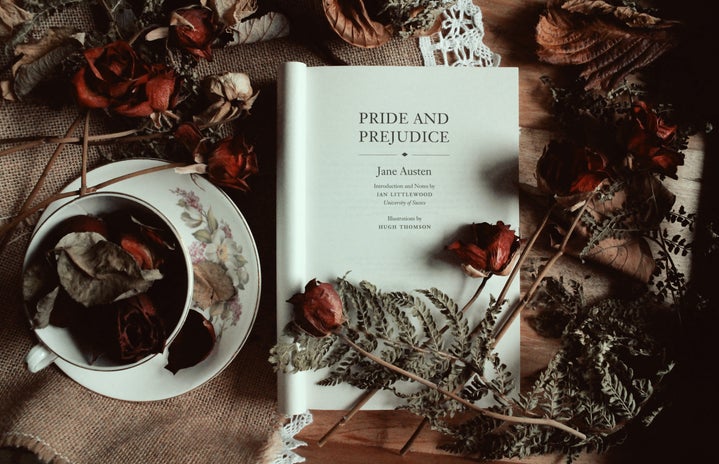The slow camera pan of their body, the excessive nudity, the two sizes too small t-shirt. These are some examples of how we can spot the male gaze in media such as film or television. The idealized versions of how women should look, act and dress through the lens of the cisgender heterosexual male has been a concept we can trace back to popular works such as the 1667 epic poem “Paradise Lost” by John Milton and how he represents the biblical image of Eve as a weak inferior character. Though this wasn’t given a name until feminist film theorist, Laura Mulvey called it the male gaze and its opposite counterpart — the female gaze.
Unlike the male gaze, the female gaze tears down the stereotypical “macho man” and praises men who are open with their feelings and in touch with their feminine side. This also benefits women, as the female gaze sees women as people instead of objects, that focus on intelligence rather than beauty (or the fact that you can have both and it doesn’t determine your worth).
Harley Quinn from Suicide Squad versus her own movie Birds Of Prey is a great example of how the gaze alternates in films. In Suicide Squad, Quinn is wearing booty shorts, and her motivation centers around her wanting to find her way back to Joker, her villainous and toxic boyfriend. In Birds Of Prey, however, her and Joker break up and the film revolves around her finding herself (while simultaneously beating up bad guys with other really cool women), cutting her hair, and throwing away the booty shorts for good. Of course, we see this all the time in film, but what about in literature?
The good old-fashioned “manic pixie dream girl” or MPDG. A girl who is carefree, whimsical, promiscuous, a majority of the time white and is often too cool for the main male protagonist. Alaska from Looking for Alaska by John Green is the manic pixie dream girl — she watches porn, is quirky, and is unconventional (her name is literally Alaska). Another popular MPDG is Sam from Perks of Being a Wallflower who is portrayed by Emma Watson in the movie. Charlie, the main protagonist, feels “love at first sight” when he sees her hypnotizing green eyes (literally every YA romance book from the 2000s ever has this description). Her past is filled with promiscuity and drugs, but now she’s the “cool girl” who offers incredible taste in music and is seen through rose-colored glasses from Charlie’s point of view. The whole “cool girl” concept is the main motivation for Amy in Gone Girl by Gillian Flynn. Amy delivers one of the most iconic lines in the book that perfectly embodies the male gaze.
“Being the Cool Girl means I am a hot, brilliant, funny woman who adores football, poker, dirty jokes, and burping, who plays videos games, drinks cheap beer, loves threesomes and anal sex. Cool Girls are above all hot. Hot and understanding. Cool Girls never get angry; they only smile in a chagrined, loving manner and let their men do whatever they want. Go ahead, shit on me, I don’t mind, I’m the Cool Girl. Men actually think this girl exists. Maybe they’re fooled because so many women are willing to pretend to be this girl”
Amy Dunne, Gone Girl by Gillian Flynn
In literature, the male gaze centers around what the “perfect” woman would be in their eyes and is often not realistic.
What about the “cool man”? The female gaze doesn’t revolve around fetishizing male power and dominance. It’s the opposite, which is why when we read novels written by women, we appreciate the heterosexual relationship dynamics. Furthermore, friendships between women seem more realistic by being less catty, which is how men usually depict friendships between women, and more caring or loving. Any love interest that evokes emotion and is perceived to care about the opposite love interest and have their best interest at heart is the epitome of the female gaze. Inej Ghafa from the duology Six of Crows by Leigh Bardugo is my favorite example of a woman written by a woman. Inej is small and lethal, as she is a spy. Not the Black Widow type of spy where she’s in tight clothing and focuses on her body, but rather a strong character with a complicated background. Though Kaz, the leader of the Six of Crows, and Inej share feelings for one another, they never really explore that due to the fact that their histories are complicated and they don’t want to cross those boundaries. She is wise, intelligent, feminine, physically and emotionally strong, overall a woman that has proved time and time again that she can be a badass and still have depth. Jo March from Little Women by Louisa May Alcott has those qualities of an intelligent and emotionally strong character that puts her writing and passions first before her love interest.
The male versus female gaze has been an ongoing debate in the past few decades, but with more female writers, we can finally see real women written on-page as well as on-screen.


